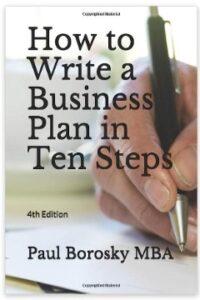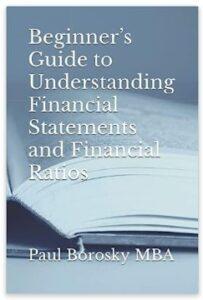How to Write a Bakery Business Plan
The bakery industry, whether it be a traditional bakery or a specialty bakery such as desserts, bread, and ethnic foods, has been growing at an above-average rate for the last several years, which has driven the demand for bakery business plans, bakery business plan templates, and bakery proform financial projections.
Our MBA business plan writer expert has pinpointed vital drivers fueling the bakery industry's expansion and the necessity for effective business plans. Innovative bakery products constantly introduced by owners result in a dedicated customer base. Such unique bakery offerings could include artistic designs, high-quality ingredients, and novel processes that boost the flavor and charm of their baked goods. Furthermore, strategically placed bakeries, like cupcake shops in busy malls, are rising to meet customer convenience.
Regardless of the growth catalysts and the escalated demand in the bakery sector, employing a professional business plan writer for bakery business plan creation provides a strategic advantage. Consequently, our business plan consultant offers valuable tips for creating your bakery business plan, template, or pro forma financial projections (9/23).
CHECK OUT OUR BAKERY BUSINESS PLAN TEMPLATE!!!
Executive Summary for a Bakery Business Plan.
The executive summary should begin with a captivating introduction that conveys the essence of the bakery's concept and unique selling proposition. Describe the bakery's specialty products: artisanal bread, delectable pastries, or custom cakes. Highlight any signature items that set the bakery apart from competitors.
Next, provide essential details about the bakery's location and its significance. If the bakery is situated in a high-traffic area, near schools or offices, or in a vibrant neighborhood, emphasize the strategic advantage of the chosen location. Briefly introduce the key members of the bakery team, including the owner or founders, head baker, and any other critical personnel. Highlight their experience, expertise, and how their skills contribute to the bakery's success.
Mention the operating hours to give readers an idea of the bakery's accessibility to potential customers. If the bakery plans to open early in the morning to cater to breakfast crowds or offer late-night options, emphasize this aspect. Discuss the main marketing avenues that the bakery will utilize to attract customers. This may include social media marketing, partnerships with local cafes or businesses, community event participation, and other promotional strategies. Finally, provide a snapshot of the anticipated revenues and profits based on market research and financial projections. This summary should be a high-level overview, emphasizing the bakery's potential for profitability and growth.
Remember that the executive summary is the first thing potential investors, lenders, or partners will read, so it should be engaging, concise, and persuasive. By providing a well-crafted executive summary, the bakery business plan gains an edge in grabbing the reader's attention and convincing them of its potential for success.
Company Information and Location for a Bakery Business.
Start by introducing the bakery's name, legal structure (such as sole proprietorship, partnership, or LLC), and the owner's name and background. Describe the owner's love for baking and how that passion has driven them to start this bakery. Mention any culinary training, baking certifications, or prior experience in the industry that adds credibility to the venture.
Next, delve into the bakery's location and why it was chosen. Discuss the area's demographics and how it aligns with the target market. If the bakery is in a bustling neighborhood with high foot traffic or close to schools or offices, emphasize how this strategic location will attract potential customers. Additionally, if the bakery is part of a community that appreciates artisanal or specialty baked goods, highlight the opportunity to tap into this niche market. Incorporate details about the bakery's size and layout. Describe the kitchen facilities, baking equipment, and the potential for expansion as the business grows. If the bakery is designed to be a cozy neighborhood café, mention the seating capacity and ambiance that will create a welcoming atmosphere for customers.
By providing a compelling narrative that intertwines the owner's passion for baking with the strategic choice of location, the 'Company Information and Location' section becomes an enticing introduction to the bakery business plan. It helps potential investors and partners understand the vision and motivation behind the bakery, making them eager to explore the rest of the plan.
Need Help Writing a Bakery Business Plan?
Call or Text Paul, Doctoral Candidate, MBA.
321-948-9588
Email: Paulb@QualityBusinessPlan.com
Hours of Operation: Monday through Friday, 8 am to 9 pm EST.
Our business plan writer is located in Orlando, FL.
CLICK HERE TO CONTACT US TODAY!!!
Product Description for a Bakery Business
A product description in a bakery business plan is essential to articulate what your bakery will offer customers. This section should be detailed, enticing and showcase your bakery's unique selling propositions. Here are the elements that should be included:
- Range of Products: Specify the variety of baked goods you plan to sell. This can include bread, pastries, cakes, cookies, and more. Don't forget to mention any specialty items or signature creations.
- Quality and Ingredients: Describe the quality of the ingredients you will use. If your bakery uses organic, locally sourced, or unique ingredients, mention it.
- Pricing: Include a general overview of your pricing strategy. You don't need to list every item's price, but giving a price range and explaining your value proposition can help.
- Dietary Accommodations: If you offer options for different dietary needs, like gluten-free, vegan, or sugar-free options, highlight them.
- Packaging: Briefly discuss how your products will be packaged. Good packaging can enhance product appeal, ensure product safety, and promote your brand.
- Seasonal Offerings: If your bakery plans to offer seasonal items like pumpkin bread in the fall or hot cross buns for Easter, mention it.
Competitive Advantages for a Bakery Business
In the Competitive Advantages section of your bakery business plan, highlighting what sets your bakery apart is critical. For instance, the uniqueness of your offerings, such as proprietary recipes or specialty items unavailable at other bakeries, could be your significant edge. Using high-quality ingredients - organic, locally sourced, or specialty - can underscore your competitive advantage. Furthermore, having a skilled team, including experienced bakers or pastry chefs, can distinctly set your bakery apart.
Your bakery's remarkable level of customer service can be a game-changer, marking a considerable competitive advantage. The location also plays a critical role; a bakery in a high-traffic area, a bustling shopping spot, or a neighborhood devoid of other bakeries can gain a substantial edge.
Pricing strategies can also amplify your bakery's competitive advantage, especially if you offer lower prices due to operational efficiency, bulk purchasing, or other factors. Your bakery's brand strength, positive customer reviews, or excellent reputation are significant competitive advantages.
Technological advancements, such as modern baking equipment, can enhance efficiency or product quality, offering a competitive advantage. A strong online presence or a digital ordering system also boosts competitiveness.
Adopting strong sustainability practices, like utilizing renewable energy sources or offering eco-friendly packaging, could cater to eco-conscious customers, providing your bakery with a competitive edge. Finally, catering to different dietary needs with options like gluten-free, vegan, or sugar-free items can be a competitive advantage if these markets are underserved in your locality.
Target Market for a Bakery Business.

A target market approach could focus on a specific demographic group, such as health-conscious consumers or individuals with dietary restrictions. The bakery might offer a wide range of gluten-free, vegan, or low-sugar options to cater to this niche market.
Additionally, bakeries can target special occasions and events. They might offer custom-made cakes and pastries for weddings, birthdays, holidays, and other celebrations. By positioning themselves as a go-to bakery for memorable occasions, they can attract a loyal customer base and build a strong reputation in the community.
Bakery owners must conduct thorough market research to identify their target market accurately. Understanding the chosen segment's needs, preferences, and buying behaviors will help tailor products and marketing efforts accordingly. By focusing on a specific target market, a bakery can better position itself in a competitive landscape, develop a loyal customer base, and achieve long-term success. A clear and well-defined target market is crucial for guiding the bakery's product offerings, marketing strategies, and overall business direction.
Industry Research for a Bakery Business Plan
In addition to national industry research, it is essential for a bakery business plan to conduct local market research as well. This includes studying the bakery market in the specific area where the business will operate. Local research should cover demographics, consumer preferences, local competitors, and market trends.
Understanding the target market's preferences and buying behavior in the local area is crucial for tailoring the bakery's product offerings to meet the community's specific needs. It also helps identify gaps in the market that the bakery can fill, giving it a competitive advantage. Furthermore, researching the local competition allows the bakery to assess the strengths and weaknesses of existing players in the market. By identifying its unique selling points and areas for improvement, the bakery can position itself strategically to stand out and attract customers.
Combining national and local industry research, a bakery business plan can provide a comprehensive overview of the industry, its growth potential, and how the proposed bakery can succeed in the market. This research is a solid foundation for making informed business decisions and developing effective strategies to succeed in the competitive bakery industry.
Owner and Management Section of a Bakery Business Plan.

A bakery business plan's Owner and Management section should highlight your educational background and professional baking experiences and emphasize your passion and dedication to baking. Showcase your unique journey, including formal culinary education, apprenticeships, or self-taught skills developed through family traditions.
In this section, delve into the specific skills and expertise that make you the ideal candidate to lead the bakery. Discuss any relevant management experience or training that will contribute to running the business effectively. Moreover, don't forget to introduce any key team members who will play significant roles in the bakery's success. Highlight their qualifications and roles within the organization.
By clearly showing your qualifications, experiences, and commitment, you will instill confidence in potential investors or lenders about your ability to run a successful bakery. Remember, the Owner and Management section serves as a personal introduction and should reflect your passion for baking, leadership abilities, and the unique qualities that set your bakery apart from the competition.
Funding Request for a Bakery Business Plan
The funding request section for a bakery business plan should present a clear and detailed breakdown of the financial requirements to establish and operate the bakery successfully. Start by identifying the essential equipment needed, such as ovens, refrigerators, and baking tools, and their respective costs.
Next, outline the startup expenses, covering remodeling costs, employee training, and initial supply purchases. Be thorough in estimating these costs to ensure a realistic representation of the financial needs. Incorporate working capital into your funding request to account for day-to-day operational expenses during the initial phases of the bakery's opening. Additionally, allocate a budget for advertising and marketing initiatives to promote the bakery and attract customers.
Don't overlook research and development costs, especially if you plan to introduce unique or innovative bakery products. Once all the financial data is compiled, summarize the funding request in a concise one-page document. Clearly state the required amount, specify whether you seek debt or equity financing, and provide a brief rationale for the funding request.
A well-structured and transparent funding request section will instill confidence in potential investors or lenders and demonstrate your commitment to financial prudence and success.
Pro Forma Financials for a Bakery Business Plan.

The financial section of a bakery business plan requires a comprehensive assessment of the bakery's financial outlook. Begin by calculating daily sales, outlining popular bakery items, their respective sales prices, and estimated variable costs. This will provide an overview of potential daily profits and costs for the bakery's core menu items.
Expand the financial projections to monthly expenses, including labor costs, rent, and loan interest payments. Analyze the financial data to determine the bakery's monthly profitability and cash flow. Incorporate a detailed financial projection segment in the business plan, explaining each aspect thoroughly. This section should present a breakdown of projected revenues, expenses, and profits for each month or quarter, providing a clear picture of the bakery's financial performance over time.
Summarize the critical financial findings in the executive summary section, enabling readers to grasp the bakery's financial outlook. This summary should offer a concise overview of the financial projections, encouraging further exploration in the dedicated financial projection segment for more in-depth information. By presenting a comprehensive and well-structured financial section, bakery owners can demonstrate their venture's viability and financial stability to potential investors, lenders, or partners.
Hopefully, these insightful tips and tricks for writing a business plan were helpful. If you need help with a business plan or financial projections, email or call us.
Author: Paul Borosky, Doctoral Candidate, MBA., Author
Owner of: Quality Business Plan and Quality Business Consultant.
Date: 9/17/2023